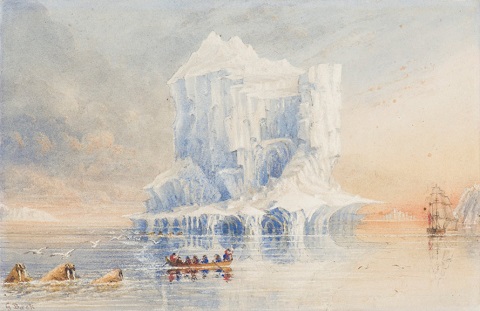In 1848, the British Admiralty offered a reward in excess of $3 million CDN to any party finding and rendering assistance to the crews of the HMS Erebus and HMS Terror, ships lost during the 1845 expedition led by Sir John Franklin to search for the Northwest Passage. Search parties never stopped looking.
From Inuit whispers to society gossip in England, the unsolved mystery quickly entered the realms of myth and legend.
Joseph Frey (BEd 1979), Chair of the Royal Canadian Geographical Society’s College of Fellows, says he is “excited and honoured” to be a member of the 2014 Victoria Strait Expedition in Nunavut, that found the first of the two lost ships.

Frey says that he’s far from the only U of T alumnus on the team – pointing to expedition leaders Ryan Harris (BA 1995 Trinity), who found the wreck, and Jim Balsillie (BComm 1984 Trinity), whose Arctic Research Foundation outfitted the 19-metre research vessel, the Martin Bergmann. Three other ships make up the expedition’s flotilla: the 83-metre Canadian coast guard icebreaker, CCGS Wilfrid Laurier; a 55-metre Royal Canadian Navy patrol ship, HMCS Kingston; and the 117-metre flagship, One Ocean Voyager, which houses additional scientific equipment. The ships are supported by a helicopter, zodiacs and an unmanned Canadian-made submersible designed to gather information from beneath the icy waves. With state-of-the-art multi-beam and side-scan sonar, the crews started to search where they left off last year, with the additional goal of mapping the water depth and topography of the ocean bottom over a previously uncharted 1,600 square kilometre area.
While the expedition had originally planned to scour Victoria Strait, thick ice and hostile weather forced the hunt far south of the original primary search area – to Queen Maud Gulf near the Nunavut mainland, where the remarkably well-preserved 170 year-old ship was found. Prior to the mission, Frey said that the search “…will not only add to our historical knowledge but will also increase our scientific knowledge of this region of Canada’s Arctic.” But in retrospect, the accumulation of topographical data will be regarded as secondary to locating one of the world’s most elusive and intriguing shipwrecks.
Watch: a sneak peek at the shipwreck from Canadian Geographic





